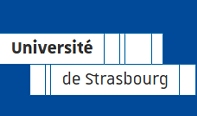Prof. José Carlos Rodríguez-Cabello "Tailored Design of Elastin-like Recombinamers for Biomedical and Biotechnological Uses: Architectural Functionality Enhances Domain Functionality”
G.I.R. BIOFORGE (Group for Advanced Materials and Nanobiotechnology), Universidad de Valladolid - CIBER-BBN, Valladolid, Spain
| What |
|
|---|---|
| When |
Nov 07, 2012 from 02:15 PM to 03:00 PM |
| Where | Hörsaal Makromolekulare Chemie, Stefan-Meier-Str. 31, Freiburg |
| Add event to calendar |
|
Recombinant technology opens the chance for obtaining highly functional materials. In many cases, functionality comes directly by the inclusion in the recombinamer sequence specific and intrinsically functional domains. Active peptides taken from natural proteins are a huge resource for function and may include different cell adhesion domains, protease sensitiveness, mineral nucleation, and many others. Furthermore, due to the extraordinary control that one has in defining an obtaining complex and extremely well defined macromolecules, as given by genetic engineering, a second option to impart functionality to the final recombinamer is available. That is based on the adequate molecular design and arrangement of the intrinsically functional domains in a tailored molecular architecture. This is of paramount importance, specially for those macromolecules which show stimuli-responsiveness and, therefore, the conformational changes caused by the triggering stimulus can cause molecular rearrangements that can lead to the emergence of additional functions. This is the approach we have been using in the design of novel functional materials, especially for biomedical and biotechnological uses. In this seminar, different molecular designs will be presented showing cell adhesion, thermal responsiveness, antifouling properties, etc., which are imparted by intrinsically functional domains, while stimulus-triggered self-organization of the molecules would lead to the emergence of functionally. That one would rely on precise and nanometric molecular design and the adequate arrangement of those recombinamer domains along the macromolecular chain. The examples presented will include platforms for cell culture and harvesting, injectable hydrogels for biomedical uses and nanoobjects in the framework of nanomedicine.

